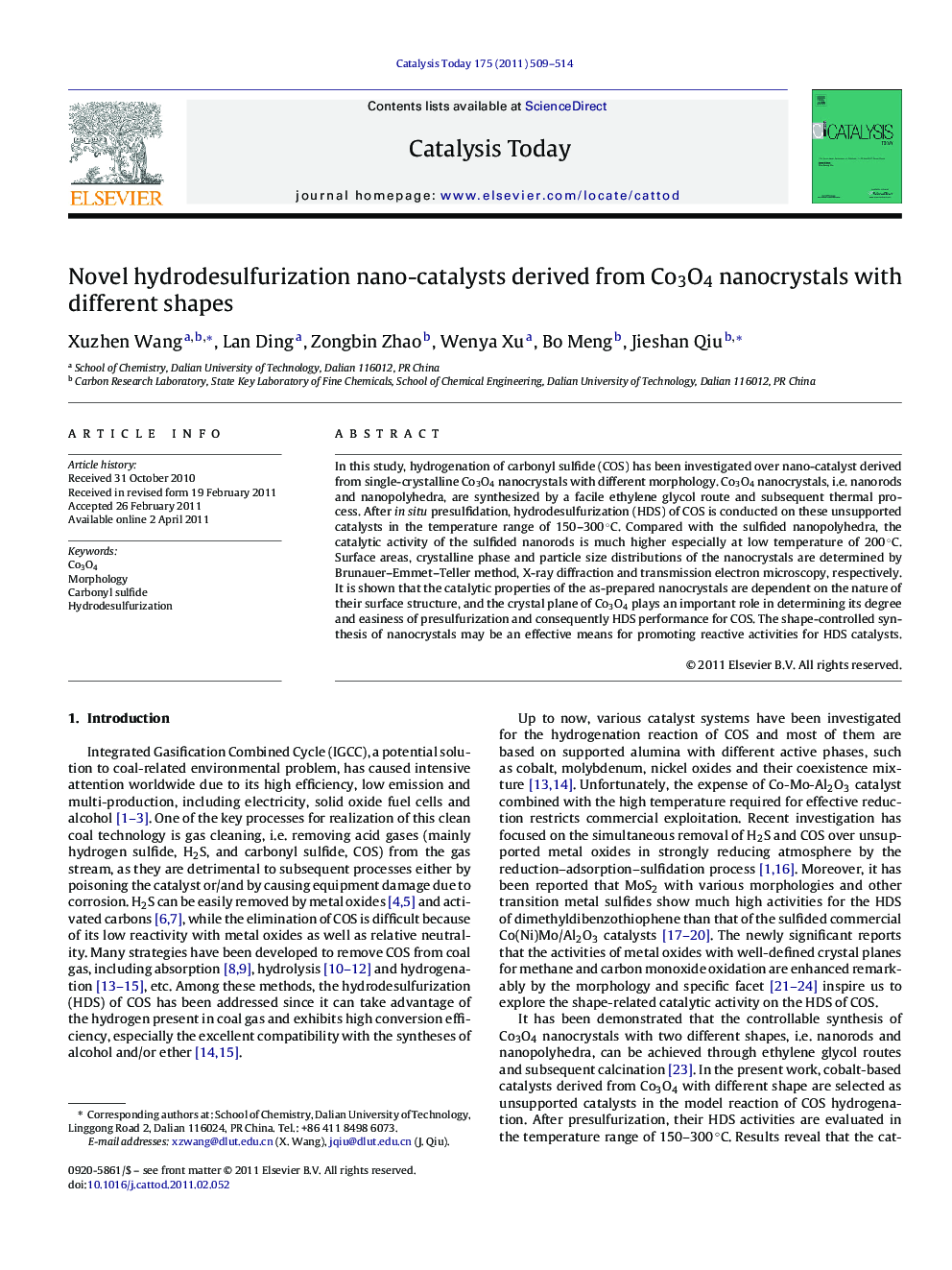| Article ID | Journal | Published Year | Pages | File Type |
|---|---|---|---|---|
| 55783 | Catalysis Today | 2011 | 6 Pages |
In this study, hydrogenation of carbonyl sulfide (COS) has been investigated over nano-catalyst derived from single-crystalline Co3O4 nanocrystals with different morphology. Co3O4 nanocrystals, i.e. nanorods and nanopolyhedra, are synthesized by a facile ethylene glycol route and subsequent thermal process. After in situ presulfidation, hydrodesulfurization (HDS) of COS is conducted on these unsupported catalysts in the temperature range of 150–300 °C. Compared with the sulfided nanopolyhedra, the catalytic activity of the sulfided nanorods is much higher especially at low temperature of 200 °C. Surface areas, crystalline phase and particle size distributions of the nanocrystals are determined by Brunauer–Emmet–Teller method, X-ray diffraction and transmission electron microscopy, respectively. It is shown that the catalytic properties of the as-prepared nanocrystals are dependent on the nature of their surface structure, and the crystal plane of Co3O4 plays an important role in determining its degree and easiness of presulfurization and consequently HDS performance for COS. The shape-controlled synthesis of nanocrystals may be an effective means for promoting reactive activities for HDS catalysts.
Graphical abstract.Figure optionsDownload full-size imageDownload high-quality image (110 K)Download as PowerPoint slideHighlights► Co3O4 nanocrystals with controllable shape are synthesized by the Ref's method. ► Hydrogenation activity of carbonyl sulfide (COS) is studied over sulfided Co3O4. ► The catalytic property of COS depends on the shape of unsupported sulfided Co3O4. ► Sulfided Co3O4 nanorods is superior to nanopolyhedra for the hydrogenation of COS.
